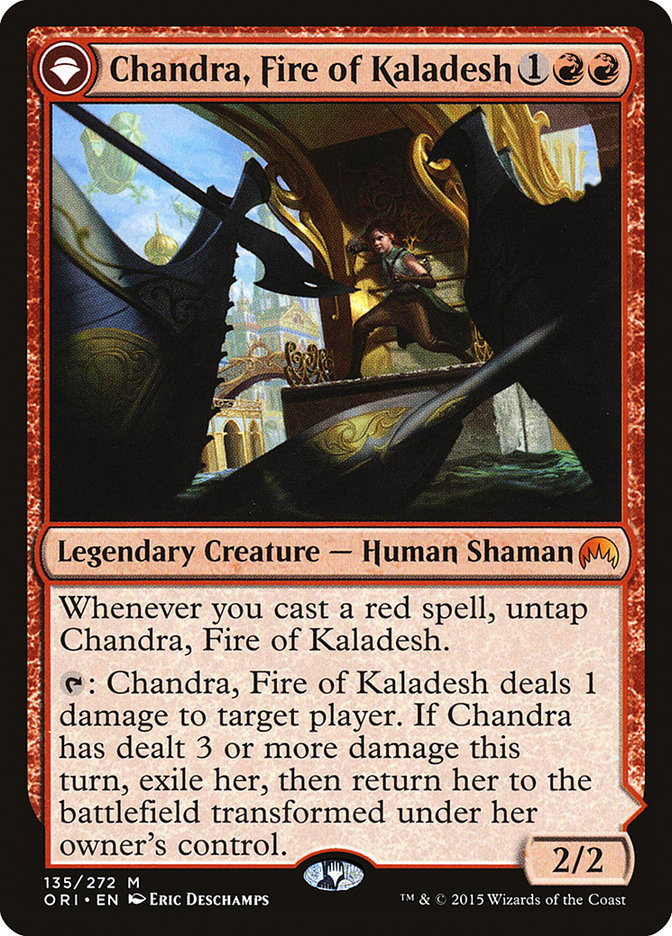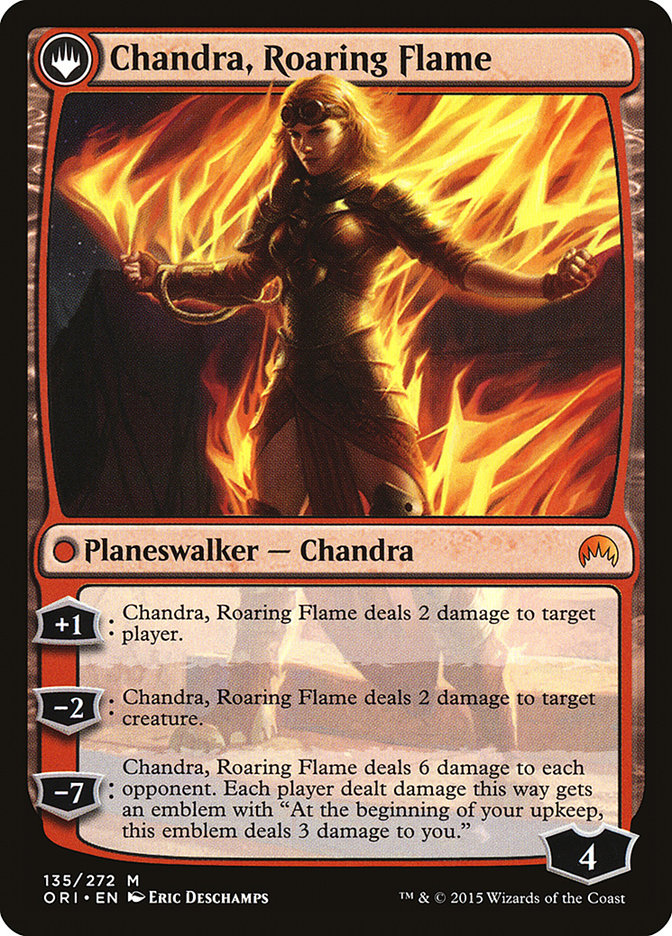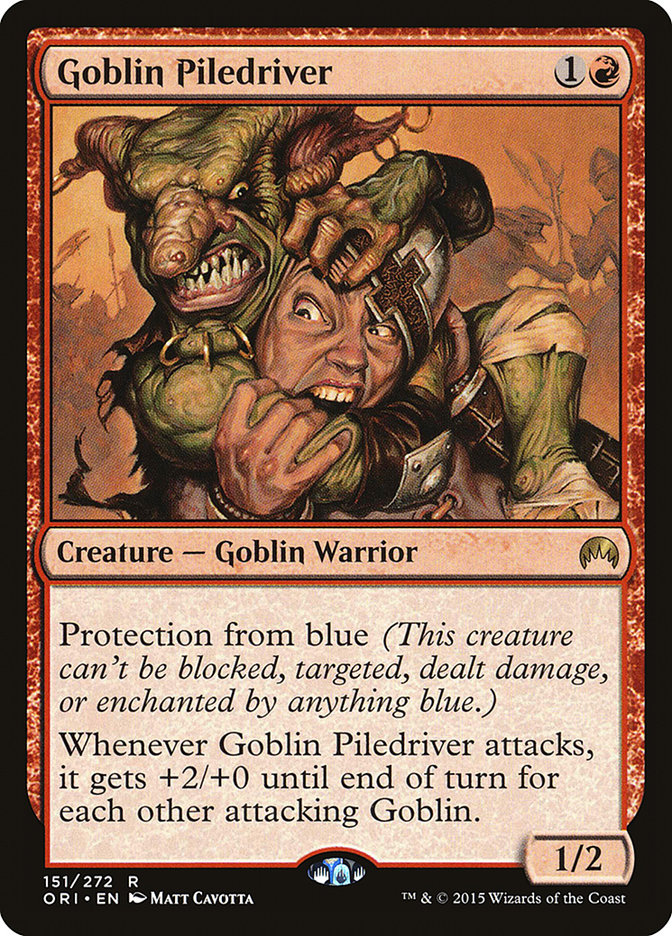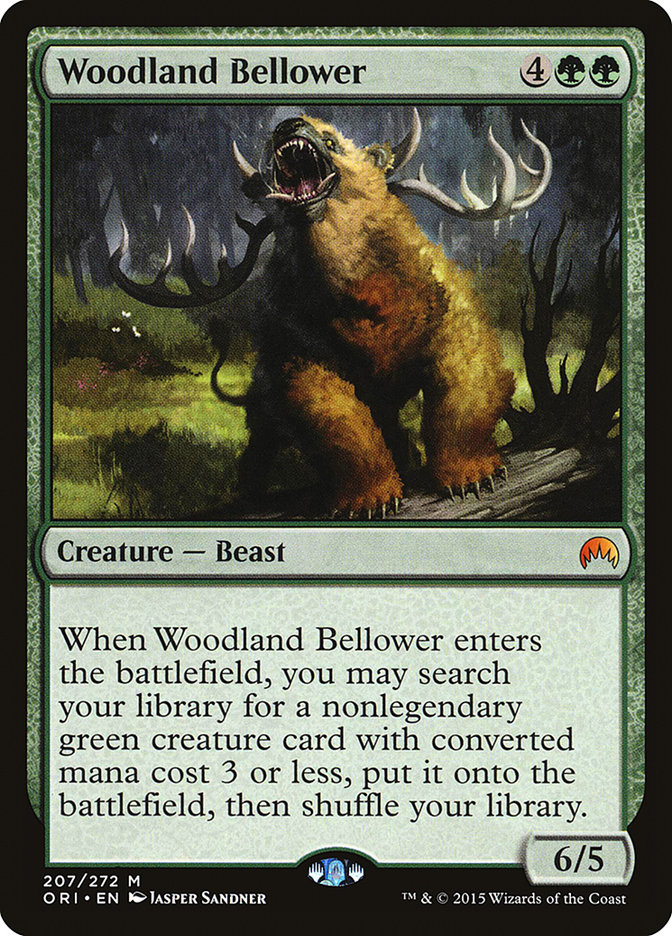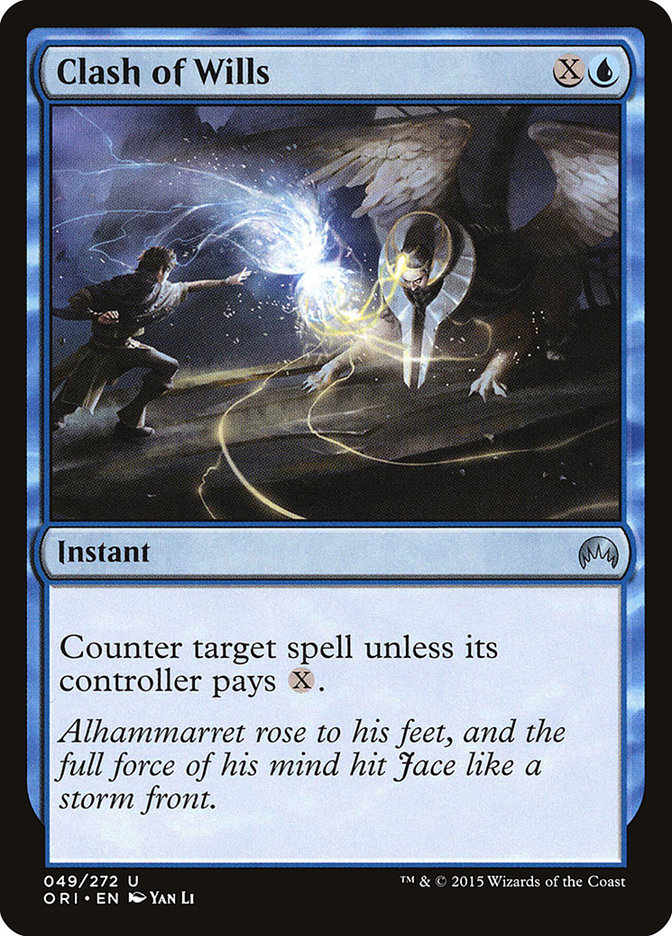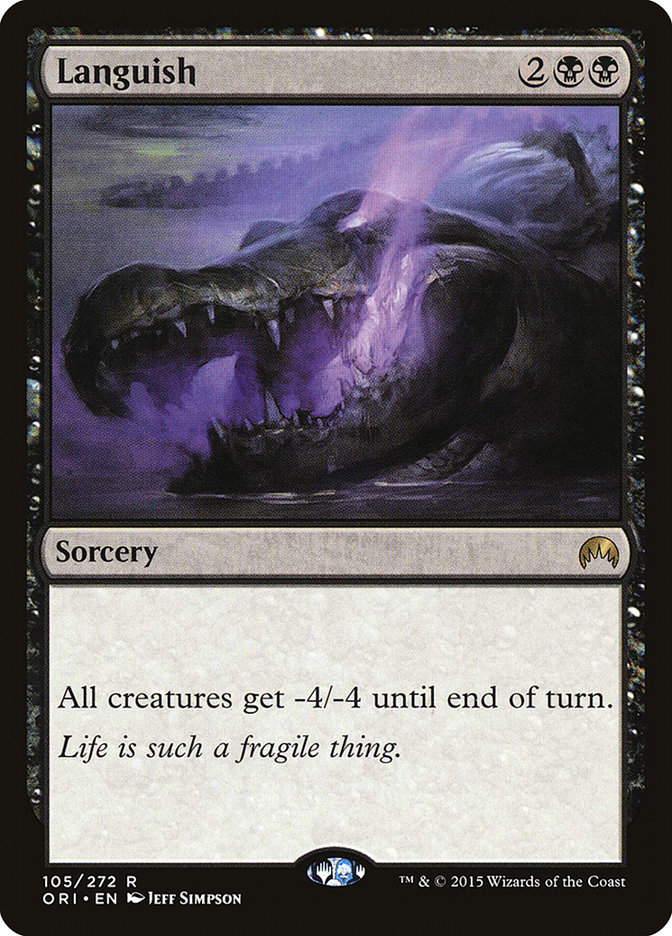Every season, we have a pandemonium of chatter about cards that we can’t wait to get our hands on.
Because of that chatter, it’s really easy to get caught up in comparing cards for little reason – where they have no strategic relationship to each other.
“Chandra isn’t as good as this other planeswalker.”
“Courser of Kruphix is a worse Oracle of Mul Daya.”
“Languish isn’t better than Mutilate!”
“Literally every planeswalker ever isn’t as good as Jace, the Mind Sculptor”
We all want our presents to be Xbox Ones, brand-new cars, or something that’s either ridiculously over the top and over the line (or both!), or something just for specifically us and no one else. We warp our evaluation because of that, and a lot of cards suffer because of it. Dig Through Time actually wasn’t an instant hit, and those same people that thought that it’d be too expensive and clunky were shortly wondering why Wizards would put Delve in Standard again.
Not everything has to be the way you want it to be for you to appreciate it, and how you think a card design should be doesn’t really matter when you’re turning in that deck registration sheet with the intent of winning the tournament. While it’s almost impossible to be completely objective with evaluations, you can easily look at things in a more positive light than always looking for flaws, potentially finding more possibilities in the process.
I highlight Chandra, Fire of Kaladesh because many people seem to be missing an important thing about her.
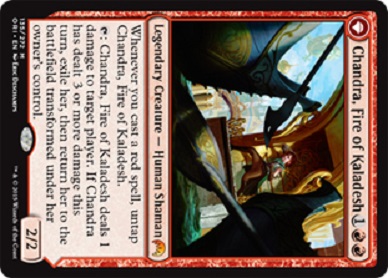
You can attack with her.
I know it sounds rather simple, but it’s a lot harder to see simple things when your mind is already checked out on something’s potential. Most of the time, if the blocker is small enough, you’ll attack then use some spell to kill the blocker so she untaps during combat, ready to transform afterwards. The easiest way to transform Chandra is, by far, to attack with her, play one red spell, then tap for that third transformational point of damage. How do we facilitate this? Atarka’s Command is the primary way. If we look more closely, it doesn’t actually matter what Chandra does damage to, as long as it’s three or more. Attacking and using Atarka’s Command in combat will count as that three damage, with an extra ping for good measure. That Command will help her push through things like Courser of Kruphix, though she’ll need to -2 to finish that one up. When you’re strapped on ways to get her to deal damage, she’s still a poor mage’s Goblin Fireslinger that can harass planeswalkers. It’s in this instance that you then want to build up burn spells to get her transformation going, especially if one of those spells leads up to making your Atarka’s Command good. Pinging for a point of damage while forcing opponents to stay on defense is an angle that some red decks wish they had right now.
Maybe the best Chandra shell isn’t just a shoo-in mono-red deck, but instead a deck that actually takes advantage of how Chandra operates, and utilizes cards that gain more of a progressive advantage from her being a lightning rod. Thunderbreak Regent is the epitome of exactly this, as is Ashcloud Phoenix. With that type of formula, we can safely come up with a very preliminary, probably bad, and definitely experimental list. The sole purpose of said list is to illustrate what ideas are being brought together.
Creatures (18)
Lands (24)
Spells (18)

Moving on, we have what was a pretty big surprise to me.
My lifelong quest of making Shaheen Soorani control wizard life as miserable as possible is getting easier and easier nowadays. I don’t think Goblin Piledriver is as busted as other people think it is, but it’s pretty nice that it exists. There aren’t very many good Goblins available to us in Standard, but we can scrape by with what we have if we maintain the tribal theme. Obelisk of Urd is still a card, and when combined with the spread of cards that make traditional red decks great, then I think we can put something together.
Creatures (22)
- 4 Goblin Piledriver
- 4 Frenzied Goblin
- 4 Foundry Street Denizen
- 4 Goblin Rabblemaster
- 2 Goblin Heelcutter
- 4 Mardu Scout
Lands (21)
Spells (17)

From Goblins to Merfolk, Harbinger of the Tides is one of the best cards in the set for Modern, and will push the already powerful Merfolk tribe over the top.
Now, I’m pretty biased when it comes to Merfolk, as it’s one of the decks that doesn’t look like anything special on paper but will actually just completely run you over. Vapor Snag was already a card that was in and out of decks, and now it’s almost a no-brainer to include this synergistic tool in an already-stacked inventory. With Merrow Reejery, you get to tap a creature when you cast Harbinger of Tides, then the enters-the-battlefield trigger will bounce it. Now that the amount of non-creature spells you get to play are at a minimum, the deckbuilding space you’re given is much greater.
4 Cursecatcher
1 Coralhelm Commander
4 Lord of Atlantis
4 Master of the Pearl Trident
4 Silvergill Adept
3 Harbinger of the Tides
4 Merrow Reejery
1 Thassa, God of the Sea
1 Kira, Great Glass Spinner
3 Master of Waves
4 Aether Vial
3 Spreading Seas
3 Collected Company
3 Cavern of Souls
4 Mutavault
1 Minamo, School at Water’s Edge
1 Oboro, Palace in the Clouds
1 Wanderwine Hub
4 Misty Rainforest
3 Breeding Pool
1 Yavimaya Coast
3 Island
From Modern back to Standard, we have one of my favorite cards spoiled so far:
At first, I wasn’t sure if this was going to be a major player because of how expensive it is, but the more I thought about it the more it looks like it will be. The obvious first use is as another way to hunt up Deathmist Raptors, but it also synergizes with See the Unwritten and is a huge value in your Chord of Calling decks (though obviously there it’s probably just a value one-of). It’s going to be an integral part of not only big-mana creature decks like Devotion, but possibly Elves as well. At worst, you’re grabbing a Courser of Kruphix, hunting out a Reclamation Sage for value, or adding a Hornet Nest to your defense.
Two of the biggest additions to Standard are also two cards that make me completely delete entire decklists because I know I can’t ever beat them:
One of the decks I’m most excited for is a blue-based control deck, but Esper Dragons is the last place I want to be. With Languish and Clash of Wills combined with Silumgar’s Scorn and Dragonlord Silumgar, this is my choice of decks to beat in the preliminary.
Creatures (6)
Lands (28)
Spells (26)

Dragonlord Silumgar being able to survive Languish is the most disgusting thing I’ve seen since Dragonlord Ojutai going coast-to-coast on people. You can now play a more traditional control deck with a million counterspells to hold down the fort and an end game that just borrows your opponents’ end games, leaving you with more room in your deck to do even more things. The best thing about this deck is that consistent two-mana counters drops the need for Bile Blight significantly, which greatly alleviates the strain on your mana and allows you to fetch more freely. The less-talked-about Reave Soul is a nifty tool as well, despite being sorcery speed.
These are just a few ideas I have for Magic Origins, and the rest of the cards haven’t even been spoiled yet as of this writing! Elves have an enormous swing in their favor, and I know for sure that Exquisite Firecraft and Knight of the White Orchid are going to be integral to their respective decks’ success if they’re going to be good. There’s so much to love about what I think is one of the best Core Sets ever printed, I wish I could just play already!
What ideas have you come up with so far? Is there anything that you think will be worth watching as our new Standard environment is on the horizon?

